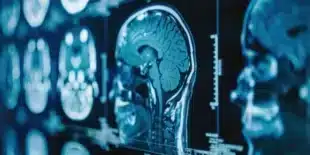It’s common to look in the mirror and wonder how time has passed so quickly, noticing new wrinkles and blemishes that seemed to appear overnight. While it may feel like life is catching up, science offers an explanation for these sudden changes in appearance.
A recent study has identified two significant points in life when people experience a noticeable shift in their appearance: around age 44 and again at age 60. The research, which focused on the molecular changes associated with aging, reveals that these transitions are not gradual, but rather abrupt and obvious.
Geneticist Michael Snyder from Stanford University explained that aging involves more than just slow, steady change. There are distinct periods where these changes are particularly dramatic, especially in the mid-40s and early 60s, regardless of the type of molecule being studied.
As we get older, the risk of developing various diseases also increases. Snyder and his team have been exploring the biology of aging to better understand how to prevent or treat these conditions earlier.
The study involved tracking 108 adults who provided biological samples over several years. Each participant submitted an average of 47 samples over a period of 626 days, with the longest contributor providing 367 samples. The researchers examined various biological features, including RNA, proteins, lipids, and microbiome data from the gut, skin, nose, and mouth, amounting to a total of 135,239 biological features.
The study revealed clear signs of aging at two key stages of life. The abundance of different types of molecules in the body shifted noticeably at these points, with around 81% of the molecules studied showing changes during one or both of these phases. These changes were most pronounced in the mid-40s and early 60s.
In the mid-40s, the changes were related to lipid metabolism, the body’s response to caffeine and alcohol, cardiovascular health, and issues with the skin and muscles. In the 60s, the changes centered on carbohydrate and caffeine metabolism, cardiovascular issues, immune system regulation, skin and muscle function, and kidney health.
Interestingly, menopause or perimenopause was not found to be a major contributing factor to these changes in women. According to Xiaotao Shen, the first author of the study, while menopause may influence some of these changes, there are likely other, more significant factors at play for both men and women.


